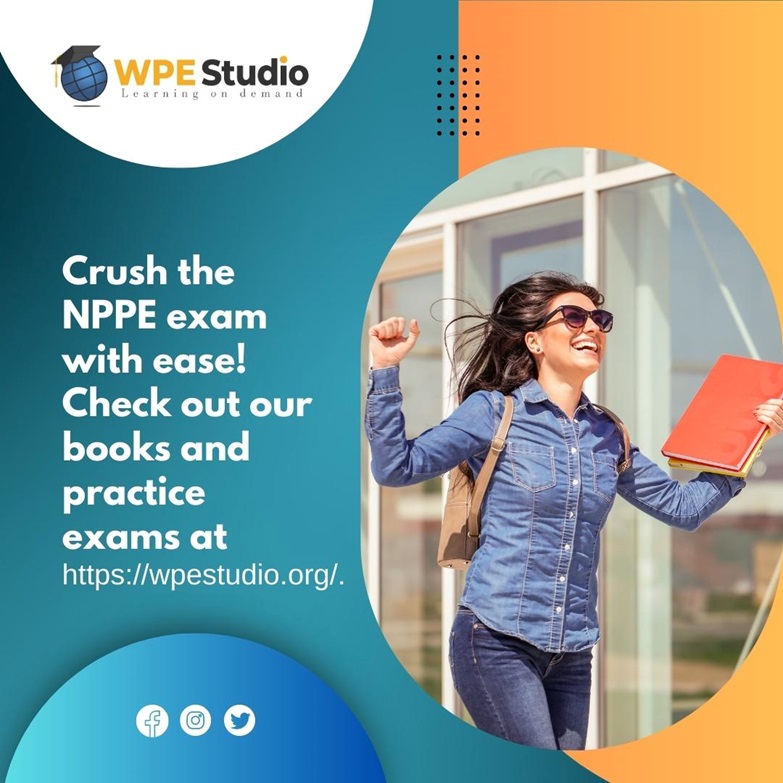Introduction.
Differently from the NPPE exam in all other provinces and territories in Canada, the one in British Columbia (EGBC) includes an essay question. The webpage of EGBC indicates that ‘The 1-hour Professional Practice Exam essay format requires the candidate to select one of three topics to develop into an essay. You will be graded on your level of comprehension of the topic and your ability to communicate your response.’ The same webpage also specifies that ‘ The exam tests the applicant’s knowledge of Canadian professional practice, law, and ethics.’
Despite EGBC mentioning an ‘essay format,’ it does not truly refer to the format of the essay itself but to the way the question is presented and how it will be graded. The format of the essay itself, the one you will write, is free. So, you can choose any format you want, as there are many types of essays and ways to write one, many strategies to follow, many structures to choose from, etc. Having said that, however, this blog will concentrate only on what WPE Studio considers to be the best technique and tips to optimally address the essay question of the NPPE exam. It will be divided into four sections:
- Essay question format
- Strategy
- Structure
- Writing tips
Again, mastering the essay question involves technique and skill. The technique will be presented in this blog, whereas you will need to build your skill by repetition [1].
1.- Essay question format.
According to the NPPE Candidate Guide [2], the essay question format is as follows:
- The candidates are presented with three essay topics
- Each candidate can choose any, but only one of the three topics
- It is a closed-book exam, so no printed material can be consulted
- The duration of the essay question is one hour (1hr)
- There is no minimum word or page count
- The structure of the essay is free
- The essay is graded on the abilities to:
- understand the question and the level of comprehension
- respond the question
- communicate the response
- organize the essay
- apply proper grammar
- use examples from one’s own studies (not always the case)
- relate the chosen topic to one’s own field of practice (not always the case)
- The essay is graded from 0 to 10 marks
- A minimum mark of 6 is required to pass the essay question
NOTE: the multiple-choice question part of the NPPE exam is independent of the essay question part, and a candidate needs to pass both independently to pass the exam.
2.- Strategy.
Since this is a closed book exam and time is limited, the central point of the optimal strategy for the essay question is to design, well before the exam, a simple template, format, or structure (referred to from here onwards just as ‘structure’) that can be used to write a short essay on any topic, and make it of second nature to you. That way, you will not waste time during the exam trying to device a different structure but rather concentrate on your brainstorming, organization of your material to fit the structure, and writing. The structure will be covered in detail below. This section will be divided into two parts: before and during the exam.
a. Before the exam
-
Read the section on Exam strategy in [1]
-
Device a simple template that you can apply to write an essay on just any topic. This template must provide a strong yet easy-to-follow structure where the main ideas can be spelled out in a logical order (see Section 3)
-
Practice as many times as necessary until you get the skill of writing essays on any topic within the time limit
-
Become familiar with all the recommended study materials for the NPPE exam
-
Most topics for the essay question can be related to the Code of Ethics (CoE) of the Association. Therefore, it is advisable to become very conversant with the CoE and its companion, the Guide to the Code of Ethics. Watch the video [3], and optimally learn by heart, and in order, the list suggested below. These are short mnemonic words/phrases that may well be taken as compact titles for the 13 principles of the CoE which can help you recall them during this part of the exam:
-
Public interests
-
Competency
-
Laws
-
Standards
-
Competence
-
Qualifications
-
Professional opinion
-
Conflicts of interest
-
Duty to report
-
If overruled
-
Teamwork
-
Diligence and documentation
-
Do unto others
b. During the exam
The main three steps when writing any essay are preparation, writing, and revision [5]. These steps are addressed in turn:
Preparation:
- Pick the topic that is most familiar to you or the one that would prompt more ideas on a quick mock brainstorming of each of the 3 topics (5 minutes)
- Once you chose the topic, proceed with a more rigorous brainstorm on it, and write down all the ideas that come to your mind as a bullet-point list (5 minutes)
- Organize and group the bullet points according to a few main ideas you can identify –optimally, three (3 minutes)
- Identify/choose/device/write a thesis statement for your essay based on the topic and your brainstorming. The thesis is the central argument of what you will write: the overall encompassing idea that would summarize the main ideas above; or, as seen from the flip-side, the point you want to make where the main ideas above can be used as supporting arguments. The thesis may be a point you want to prove, a particular perspective to describe an issue, your position on the topic, and so forth. Optimally, it should address squarely the topic you have chosen for your essay. You can naturally use all or part of the wording of your topic (5 minutes)
Writing
- Use your previously devised structure to write the essay (30 minutes)
Revision
- Re-read the essay from beginning to end, correct grammatical mistakes and reorganize sentences or paragraphs if necessary to produce a better impact (12 minutes)
Note: The times in parenthesis are only a guideline. Getting the skill to write essays by repetition (and on any topic) is critical as this will make you come up with more appropriate times that adjust better to your style and personality.
3.- Structure.
The most appropriate structure for a short coherent essay to be written without access to any reference material and in a very short time is the one most frequently used for speech improvisation: the ‘Sandwich Structure’ [6]. Like a sandwich, it consists of three parts: one slice of bread at the top (the introduction), another slice of bread at the bottom (the conclusion), and the toppings in between (the body). This is also referred to by others as the ‘Tell-Them Formula’ [7]:
- Tell them what you are going to tell (introduction)
- Tell them (body)
- Tell them what you just told them (conclusion)
Since there is no time or means to do proper research or a profound analysis, the essay will just reflect your current understanding of the topic.
The introduction consists of the thesis statement and a map of the structure of the body. One paragraph should suffice, and at most two. The map is just a very short description of the main ideas and the sequence in which they will be addressed in the body.
The body consists of the main ideas identified after the brainstorming, each developed in a single paragraph which should show an analysis of the idea and how it ties to the thesis statement, explanation of details, supporting views/evidence, or even data that you may recall. Optimally, three main ideas should be developed. Nevertheless, this part is somehow flexible, and more ideas could be developed each in a separate paragraph. These paragraphs may contain quite a few lines each, as necessary.
The conclusion consists of a paraphrase of the thesis statement and a summary/recap of the body. Avoid any new evidence or material. Again, one paragraph should suffice, or two if the introduction had two. It should flow naturally from the body and tie everything together.
As per the process, once you have your basic ingredients [(1) the organized brainstorming, (2) the main ideas, and (3) the thesis statement], it is more natural to develop first each main idea in a separate paragraph; and when this is complete, the introduction and conclusion can be written in parallel as they both mirror each other. The repetition implied by the Sandwich Structure or Tell-Them Formula gives clarity and coherence to the essay.
Since apart from the exam material, you do not have access to any other piece of information during the exam, the essay should not contain a reference/bibliography section. So, it ends with the conclusion.
Finally, aim for no more than 2 pages, of double-spaced content. What you say and its coherence is more important than the length of the essay.
4.- Writing Tips.
-
Since this essay will not be a piece of art, but a technical essay, limit your use of figures of speech and preferably write your sentences in their basic order: subject + verb + complement.
-
Write short sentences. Consider using at most one subordinate clause, if possible, per each sentence, and preferably none, though this may not be that simple
-
Avoid common grammar and punctuation mistakes and do not use contractions (i.e., write “do not” instead of “don’t”). If possible, become familiar with a basic grammar book like [8]
-
Use examples whenever possible. They add another dimension to the essay and enhance your points and reasoning
-
Each paragraph of the body of your essay deals with a different main idea, so it needs to be comprehensive. For best results, each paragraph should start with a topic sentence that introduces and summarize the main idea; that is the topic sentence should serve as a transition to the new paragraph and give a sense of what to expect from it. The rest of the paragraph should follow logically from and relate to the topic sentence to achieve coherence. Make an effort to organize well its sentences to achieve the best impact using appropriate transition words from sentence to sentence. Examples: ‘furthermore’ to emphasize, ‘also’ to expand, ‘in contrast’ to contrast, ‘on the other hand’ to compare, etc.
-
Practice the strategy in Section 2 until you master it. Allow yourself enough time for point F to review your essay before time expires, and do not submit your essay if you still have time left: Go over your essay again and again as time would allow as every typo you correct improves your grade
Conclusions.
Excelling at writing a closed-book-exam essay requires (i) mastering technique and (ii) gaining skill at it. This blog addressed a simple technique to efficiently answer the essay question of the EGBC NPPE exam. The candidate then needs to practice this technique repeatedly until it becomes of second nature to him.
Note: The original version of this post appeared first in the blog section of NPPE Exam: Top Preparation Materials | WPE Studio on August 9, 2022.
References.
|
[1] |
WPE-Studio, "Techniques to Ace the Multiple-Choice-Question NPPE Exam," 2022. |
|
[2] |
National Professional Practice Examination (NPPE), "Candidate Guide," 2022. |
|
[3] |
|
[4] |
WPE-Studio, "Techniques to evoke the List of Principles of the EGBC Code of Ethics," 2022. |
|
[5] |
|
[6] |
C. Clapp, "Craft Presentation Structure with Sandwich Structure Method". |
|
[7] |
|
[8] |
J. Eggenschwiler, "Writing - Grammar, Usage, and Style", 1997. |
|
[9] |
WPE-Studio, "Engineering & Geoscience NPPE: Law and Ethics", 2021. |
|
[10] |
C. Clapp, "Craft a great presentation in 4 straightforward Steps". |



0 Comments